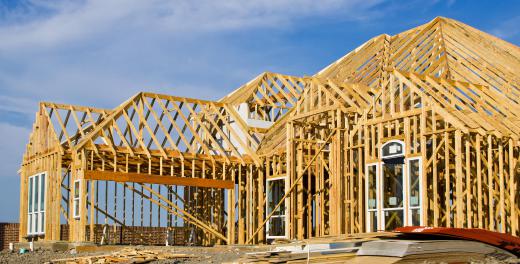Construction industry standards are practices or technologies used in the construction field. These practices are considered to be acceptable, or correct by members of this industry, as well as regulators and governing bodies. Construction industry standards help to govern issues like safety, quality, materials and operational principles used in the construction field. They are developed over time by trade groups, industry associations, and construction officials. While construction industry standards alone are not necessarily applicable by law, they are often adopted by lawmakers or code developers, and used to govern practices within the industry.
Many types of organizations are involved in developing construction industry standards. Some of these groups, such as the International Organization for Standards (ISO) develop standards used all over the world. Other global standards groups include the International Code Council, which focuses on testing standards for materials and building techniques. In the United States, engineering groups like the American Society of Heating, Refrigeration and Air Conditioning Engineers or the American Society of Mechanical Engineers are heavily involved in standards development within their specific fields. Safety organizations, such as the Occupational Safety and Health Administration (OSHA), also contribute to construction standards development.

Standards themselves should be considered voluntary in most cases, and contractors are not legally required to follow these standards. Generally, an organization in the construction field will develop a standard relating to the best material for specific roofing applications, or the best way to test fire-rated doors. Organizations like the International Code Council may take notice of these standards and subject them to committee review or testing. Upon approval, the council may adapt these standards into its annual International Building Code standards. At that point, it is up to individual states or countries to adopt the new code and enact these standards as law.

Many different bodies within the construction field refer to these standards during everyday activities. This includes builders and contractors, who rely on construction industry standards to determine the best method of completing a specific project. It may also include architects and engineers looking for solutions to complex construction scenarios. Manufacturers use these standards to develop and test new products. Consumers and building owners may utilize these standards when drafting a contract or evaluating a newly-completed construction project.

For an example of construction industry standards development, consider the case of residential home sprinklers. For many years, residential building codes have not required fire sprinkler systems in new or existing homes. Throughout the late 20th and early 21st century, trade groups within the sprinkler industry began to lobby the International Code Council and other organizations about the importance of residential sprinkler systems. Throughout the early 21st century, these groups investigated the life-saving potential of these sprinklers, and eventually, the International Code Council added these sprinkler systems to its residential building codes. Since that time, many cities and states in throughout the world have adopted this international code, making home sprinklers standard in some areas.
